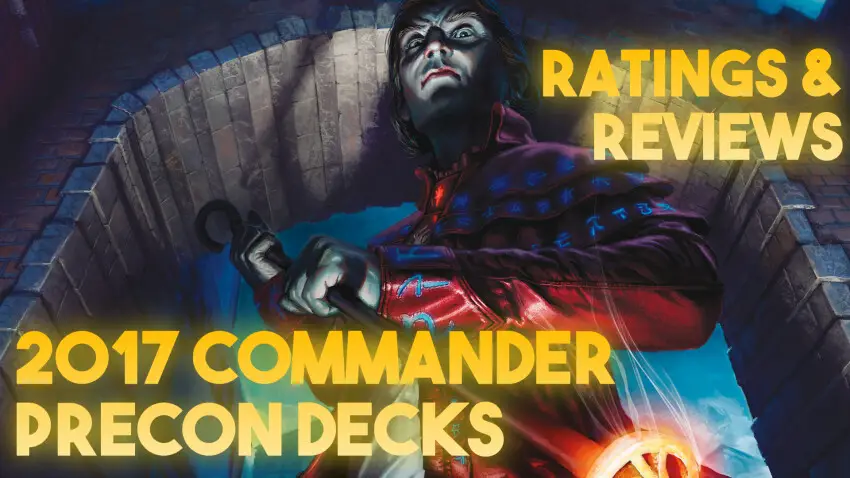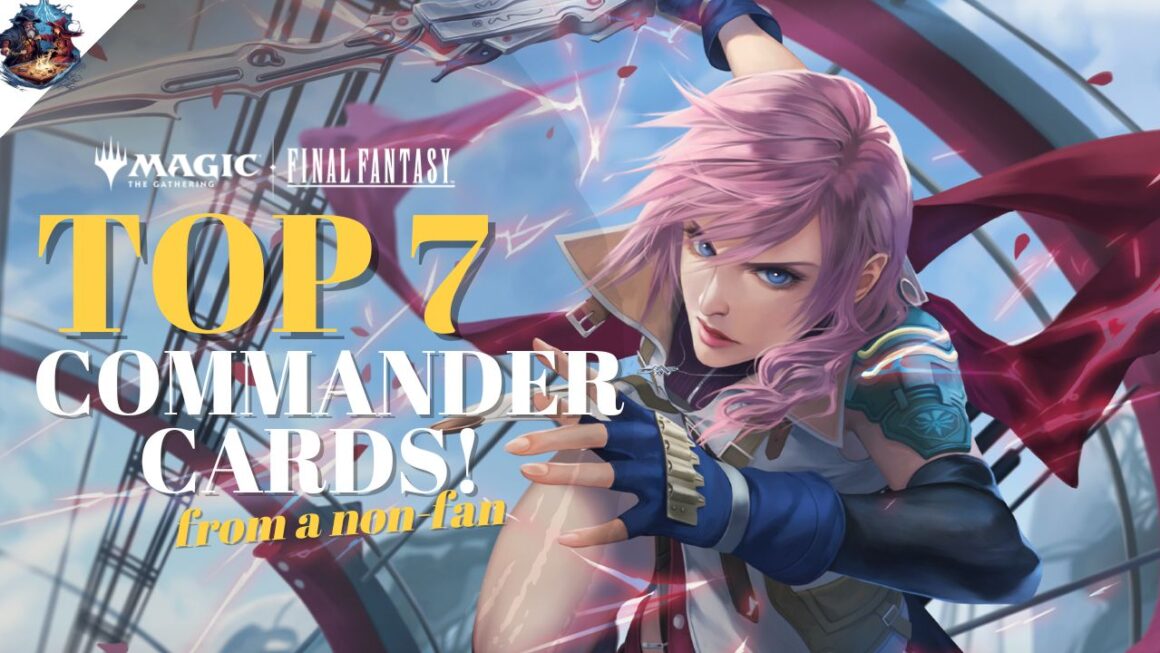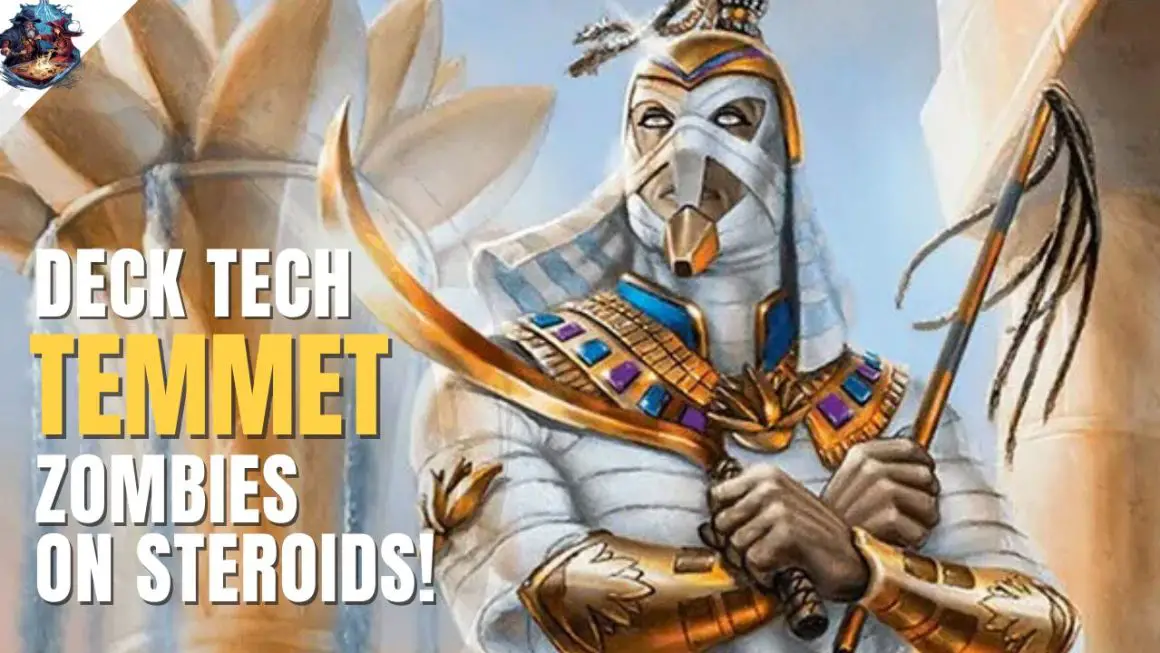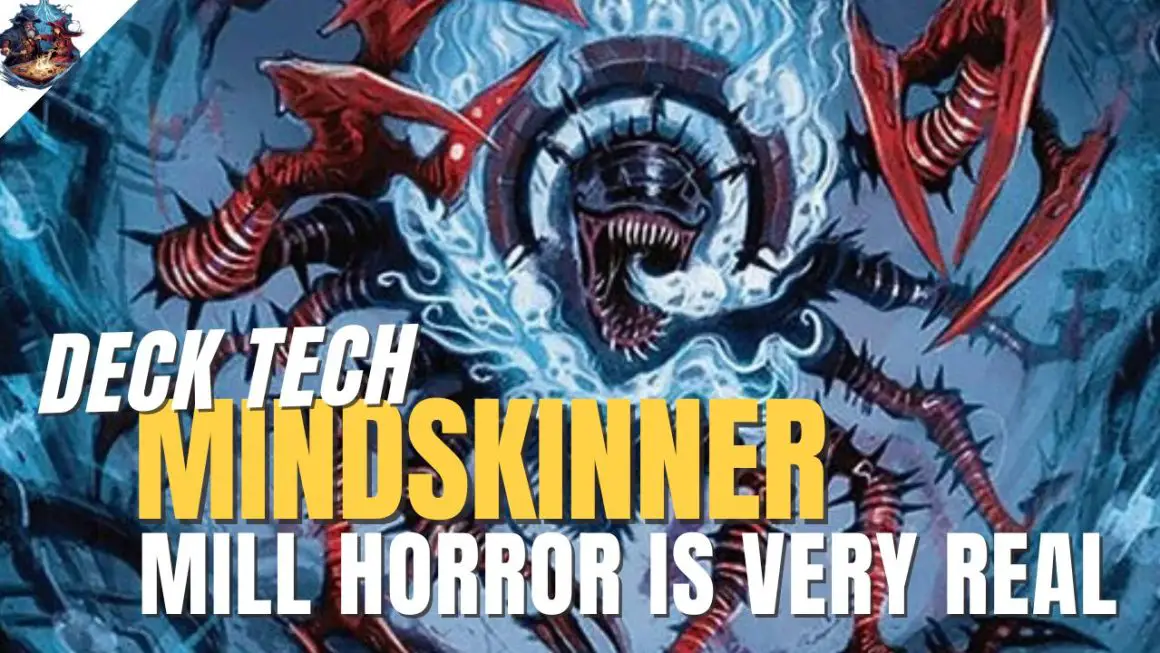With the sudden surge of Commander players across the globe, as well as the recent spoilers of Commander Legends, I figured now would be a good time to give my personal ratings on the Commander Preconstructed (Precon) decks from 2017 to 2020 for new players.
As a new player, building a Commander deck from scratch may be quite intimidating, since the prospect of finding over 60+ unique cards out of a pool of 25,000 is exceedingly difficult. Thus, Wizards of the Coast has made it easier both financially and physically by providing new players with these Preconstructed Decks for them to purchase and play with.
But why 2017-2020? These Commander decks are the most accessible for new players, and should be relatively easy to come across at your local game stores. Simultaneously, the decks from 2013 to 2016 are much harder to find in their original, sealed packaging at their MSRP. (Even as a new player, I wouldn’t really be looking at paying $85 for the “Power Hungry” Preconstructed Deck)
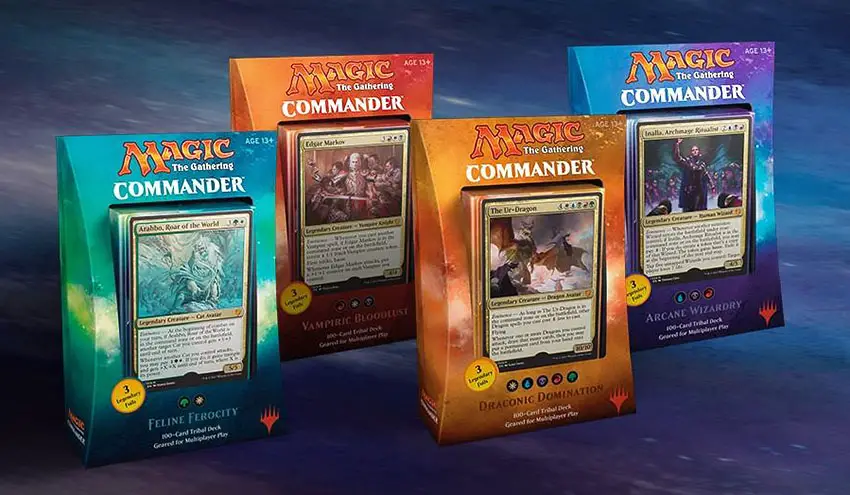
The 2017 Precons are regarded as some of the best ever for new players, due to the quality of reprints in these decks coupled with the strength of the Eminence mechanic, which basically results in a free trigger (or in the case of The Ur-Dragon, a free Mana reducer). Each of the decks supports a tribal theme, be it Vampires, Dragons, Wizards or Cats!
How are Decks Rated?
I’m rating them based off a system that I designed for new players, which consists of the following categories:
Playability – How likely the deck is to hold its own against other non-precon decks in the format.
Value – How good is the deck in terms of financial value and inherent value of cards present.
Upgradability – How easily the deck components can be broken apart and upgraded.
Beginner Friendliness – How easy are the mechanics of the deck for a beginner to learn.
Accessibility – How easy is it to get a hold of the deck at MSRP at your local game store. I will be taking into account the online availability of the decks and then extrapolating them to the whole market. It may be easier (or harder) for you to obtain these decks in your region.
For each category, I will give a score out of 5 stars, and there’ll be an overall rating to sum it up.
“Feline Ferocity” Deck: Cats Tribal / Equipment Matters
Main Commander: Arahbo, Roar of the World
Sub-Commanders: Mirri, Weatherlight Duelist and Nazahn, Revered Bladesmith.
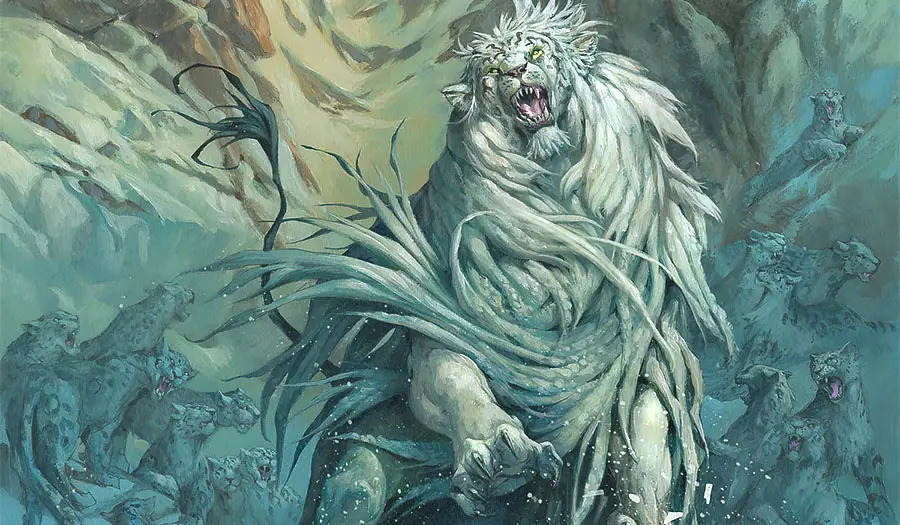
Deck Overview: Feline Ferocity is a Cat-centric Selesnya (green-white) deck. It’s main win conditions are to buff up the multiple Creatures in the deck using Arahbo’s ability or through use of Equipment like Hammer of Nazahn or Bloodforged Battle-Axe.
Cards like Mirri, Weatherlight Duelist and Grappling Hook can turn combat into a breeze by providing favourable trades and opening a path for your heavy hitters to rush down your opponent for victory.
Playability:
Arahbo, Roar of the World himself has become a menace in 1v1 Duel Commander, so much so that he’s become a core rush strategy in the format. Having +3/+3 on any Cat Creature by as early as turn 2 can turn the tide of battle incredibly fast. In a multiplayer setting, Arahbo aims to play a more midrange strategy by playing and answering problematic Enchantments and Equipment all while gearing up his army of cats to smash face.
Upgradability:
This deck suffers slightly in the upgradability department, but has thankfully received a boost from Core Set 2021’s Cats. However, in the grand scheme of things, cats as a tribe is one of the less supported in Commander, so finding cards that can boost the decks are few and far between.
If one was to go down the equipment matters route, large portions of the deck become irrelevant. No point running a Jareth, Leonine Titan when you’ll be attacking with a buffed up Leonin Shikari! Simultaneously, the “equipment matters” theme requires support from cards like Sword of Feast and Famine, as well as Equipment payoff cards like Sram and Stoneforge Mystic. This can easily set you back $100+ if you want an optimised deck to battle against higher powered opponents.
Beginner Friendliness
“What’s this Equipment do?”
“Why is my deck running this card?”
“How does this card work?”
The deck isn’t as simple as just “throw a Cat, attach Equipment, beat face.” It requires complex setup and requires players to really plan ahead. Simultaneously, the deck doesn’t have much of a safety netting once it falls behind.
Save for a few draw spells that require board presence to even be useful, as well as the lack of targeted removal, the deck becomes a sitting duck once you’re out of cards or don’t fully understand the deck. (Which can happen quite often for new players)
Thankfully, the themes of the deck are clear-cut and the mechanics are easy to understand, so picking up and learning this deck shouldn’t be a problem for new players.
Value
Dear lord the value.
Mirari’s Wake, as of the writing of this article, is a whopping $22.26, with cards like Mirri, Weatherlight Duelist and Alms Collector going above the $15 mark.
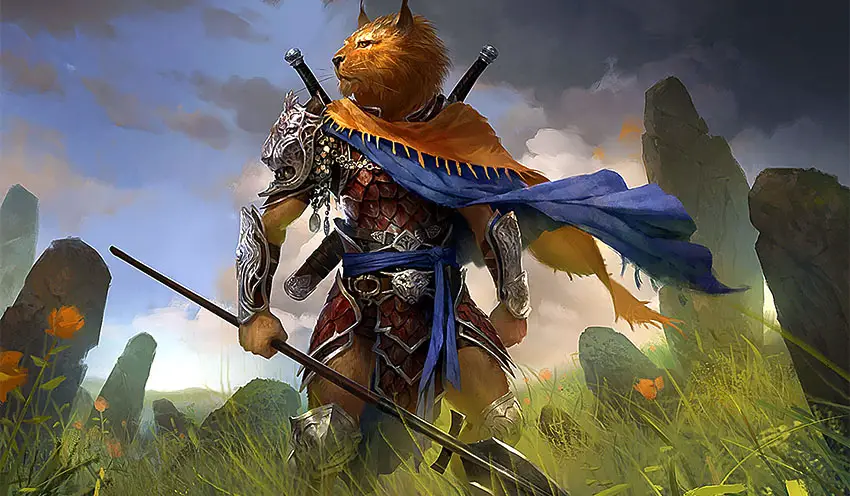
Other notable cards include Balan, Wandering Knight, Herald’s Horn and Traverse the Outlands.
Simultaneously, the deck provides many good cards for other EDH decks. Kindred Summons, Path of Ancestry, Herald’s Horn are amazing cards to throw into other green tribal decks. Traverse the Outlands, Zendikar Resurgent and Cultivate are amazing ramp sources, while cards like Lightning Greaves and Sword of the Animist are cards that can fit in any deck.
Accessibility
Looking at TCGPlayer, this deck costs about US$140 at the time of writing.
From Card Kingdom, it’s US$79.99 but out of stock.
Trying to find this deck at its MSRP of $35 is basically impossible without some deep diving and devious schemes to scam unknowledgeable sellers.
Simultaneously, at its inflated price tag of around $80-$100, there are countless decks that offer better utility and playability for much less.
Overall Rating
Value-wise, this deck exceeds all expectations, but falls short in terms of upgradability. A strong deck both out of the box and once upgraded, finding this deck at a sub $75 price tag would actually be worth it.
“Vampiric Bloodlust”: Vampire Tribal / Life Gain Payoffs
Main Commander: Edgar Markov
Sub-Commanders: Mathas, Fiend Seeker, Licia, Sanguine Tribune.
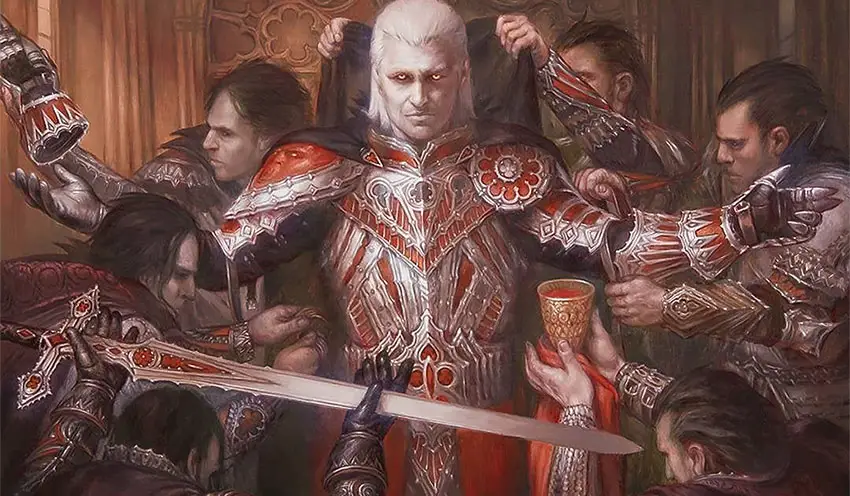
Deck Overview: Behold, one of the top commanders ever printed. His deck runs vampire tribal over a sub-theme of Life gain, with cards supporting both archetypes scattered throughout the deck.
Playability
Imagine spitting out 1/1s for FREE just by casting spells. Plus, these 1/1s synergises super well with the vampire theme that they’re effectively 3/3s or greater.
Generating a swarm of vampires with huge stats that either have evasion through mechanics like Flying, or game-swinging abilities like Lifelink or Deathtouch.
And even if you didn’t feel like attacking today, you can just sit back and sacrifice your creatures to generate value off of cards like Butcher of Malakir or Blood Artist to shoot your opponents down whilst buffing your own life totals.
Upgradability
Vampire Tribal receives lots of help from older sets like Innistrad or Zendikar, whilst being a recurring theme in Core Sets. As such, finding cheap yet powerful cards to upgrade your deck isn’t hard at all!
If you were to go down the path towards Life gain through Licia, cards like Sanguine Bond, Angel of Destiny and Felidar Guardian are also relatively easy to come by without shelling out a bomb for them.
Sadly, Mathas fits into a weird niche to fill. He plays into a sort of Political/Pillowfort Strategy where you want to kill creatures fast to get payoffs while encouraging your opponents to hit anybody but you. The deck doesn’t really support this archetype so it can be hard to develop in that direction.
Beginner Friendliness
Play Vampire Creature.
Make Vampire Token.
Cannot attack? Sacrifice and use ability triggers to drain life.
Can attack? Buff using other cards to swing in for lots of damage and potential Life gain.
Overall the deck’s mechanics are straightforward and the deck supports many variant play styles, both on the defensive side and the offensive side.
Simultaneously, the deck can rebuild itself quite fast from Edgar Markov’s Eminence ability, which also conveniently provides chump blockers to deal with problematic Creatures.
Thus, this deck is ideal for new players who aren’t too familiar with the game’s mechanics but still want to dabble in a more complex game of Commander.
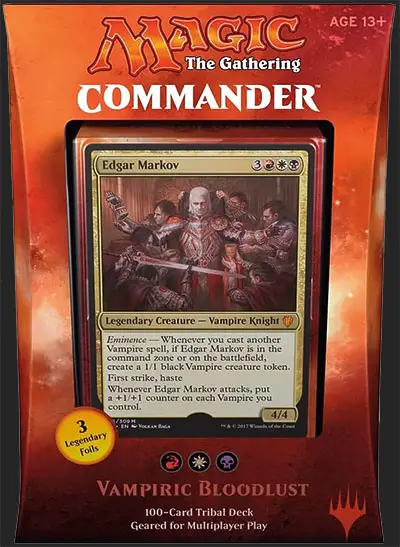
Value
Financially, The deck is carried by the price tags of Teferi’s Protection at $37.40 and Edgar Markov himself at $22.
However, this deck offers cards crucial to many other archetypes. Sacrifice decks gain from cards like Black Market, Blood Artist and Pawn of Ulamog.
Life gain decks enjoy the company of Blood Baron of Vizkopa and Sanguine Bond to help bring additional value.
While Tribal decks can use cards like Door of Destinies and the many other tribal support cards in the deck.
Accessibility
Try finding this deck below $80, much less at its original MSRP of $35.
TCGPlayer sells it for about $172 at the time of writing. Card Kingdom retails it at $99.99 but is also out of stock.
Naturally, a deck that scores so well in all other categories would certainly be the first off the shelves in the real world.
It’s sad that Wizards never printed more of these decks, since this is by far one of the best Precons for new players to pick up.
Overall Rating
An amazing Precon that only suffers due to its lack of availability and high price tag. Great flexibility without making the deck feel too unfocused, coupled with value reprints and an amazing Commander for Vampire Tribal.
“Draconic Domination”: Dragon Tribal
Main Commander: The Ur-Dragon
Sub-Commanders: O-Kagachi, Vengeful Kami and Ramos, Dragon Engine or Scion of the Ur-Dragon.
Deck Overview: Taking the “Big Payoffs” Theme to a whole other level, Draconic Domination fills its early turns with small mana reducers and whelps, before filling the board with giant dragons demanding removal before they run away with the game.
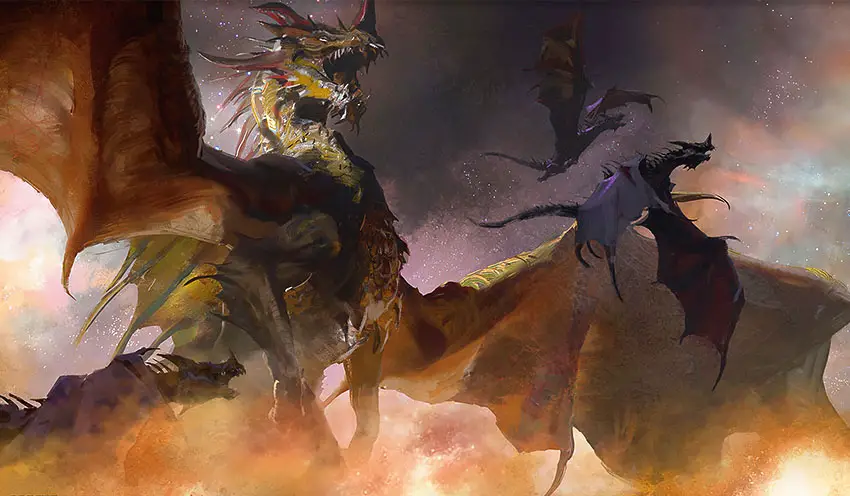
Playability
To say that this deck encapsulates the spirit of a Timmy player would be an understatement. Big Mana, bigger swings and even bigger dragons is the epitome of a Timmy player’s wet dream. Even when faced with non-Precon decks, the deck can still consistently vomit out dragons to challenge our opponents’ threats or control the board state.
Although the deck suffers from a lack of board wipe protection, cards like Bladewing the Risen and Teneb, the Harvester can easy return them back from the dead to pummel our opponents repeatedly. We can also rely on cards like Utvara Hellkite to help create a massive dragon army in seconds just by attacking with a few dragons.
What really drags the deck down in this case is the weak mana base and Lands that come into play tapped. Big Dragons need big Mana to cast, and though we have ramp sources like Sol Ring and Dreamstone Hedron, the deck lacks coloured mana rocks like the Signets cycle / Arcane Signet as well as cards like Chromatic Lantern to provide the spectrum of coloured Mana.
Simultaneously, with 16 out of our 37 Lands coming in tapped the turn we play them, we’re often left with little to no mana on the same turn to cast our dragons. Mana Reducers mean nothing when we can’t even cast our dragons in the first place!
Upgradability
Dragon Tribal tends to be a very predictable archetype in commander.
Ramp Fast -> Play Big Creatures -> Attack for lethal.
Unfortunately, there are very few other ways that this deck can be taken in should you wish to stick to Dragon Tribal. The secondary Commanders of the deck – O-Kagachi, Vengeful Kami and Ramos, Dragon Engine aren’t really great Commander material, nor are the smaller legendary creatures in the deck for a non-dragon tribal deck, save for Taigam, Ojutai Master and Teneb, the Harvester.
Beginner Friendliness
A relatively straightforward game plan with few weird or unorthodox lines of play. The deck focuses heavily on the combat to seal the win, but also supports a minor go-wide token strategy with Wasitora and Utvara Hellkite.
The main drawback here is in the multicoloured Mana base, which has a possibility of backfiring spectacularly for new players if they fail to draw that one particular multicoloured Land to cast their Dragons.
Simultaneously, most of the lands in the deck come into play tapped, which leaves this deck wide open in the early game and makes casting the multicoloured dragon spells exceedingly difficult on curve.
Value
Looking at the deck list alone, Ramos and Kindred Discovery stand out as the two cards over the $20 mark. Following in their footsteps is Herald’s Horn and the main Commander itself at $11.
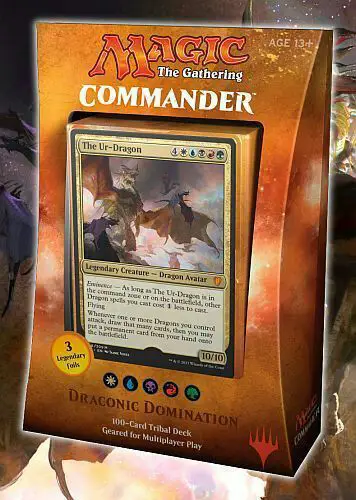
As for value card-wise, the deck provides the classic tribal staples like Herald’s Horn and the Precon-exclusive Kindred Discovery. However, the well dries up when we expand out of the tribal theme.
The many dragons in the deck don’t really support much of any other themes, except maybe Utvara Hellkite in Token generation decks, or Taigam, Ojutai Master in a spell-slinger copying/doubling shell.
Accessibility
As is the problem for all 2017 Precond decks, Draconic Domination suffers from a small print run and valuable reprints that caused the deck to be snapped up almost immediately off the shelves of LGSs.
Overall Rating
What can I say? A well-packaged and supported deck coupled with some of the best dragons for the format at the original MSRP of $35 is a recipe for success.
With a major overhaul to the Land base, the deck can actually become quite a potent battlecruiser Commander build, and the premise of casting giant, game-winning Dragons turn after turn makes for great fun each and every game.
“Arcane Wizardry”: Wizard Tribal
Main Commander: Inalla, Archmage Ritualist
Sub-Commanders: Kess, Dissident Mage and Mairsil, the Pretender
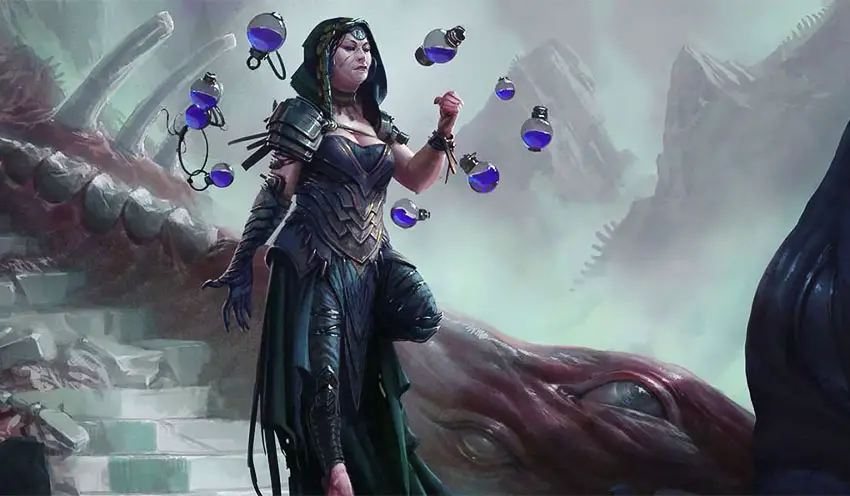
Deck Overview: Taking a page out of Harry Potter, this deck focuses heavily on casting Wizards with various ETB / Static effects to grind your opponents down. The deck also runs a minor Graveyard recursion deck theme amid the many, many Wizards which help recast spells, draw cards and make your opponents lose 7 life.
Playability
Inalla, Archmage Ritualist stands to be one of the better Commanders for Wizard tribal, due to her ability to spit out 1/1 tokens on each cast for a measly 1 extra colourless mana.
These Wizards also trigger the effects of other related cards like Azami, Lady of Scrolls or provide cannon fodder for chump blocking against large Creatures whilst maintaining a sizeably-large board state. The deck itself is weak to removal, but still possesses a minor recursion theme to get back its Creatures, albeit for a turn or two at best.
With it’s fair share of board wipes like Kindred Dominance and Decree of Pain, coupled with cards like Reality Shift or Chaos Warp to deal with troublesome Permanents, these allow the deck to act like a Swiss Army knife for removal, dealing with threats effectively and efficiently.
This deck rewards both proactive and reactive game styles, and can temper itself to fit each niche at a whim’s notice. As such, it fits very well into any playgroup and can even hold its own against more tuned opponents.
Upgradability
Wizard tribal has had much support from later sets such as Dominaria and Battlebond, which printed new cards such as Naru Meha, Master Wizard and Adeliz, Cinder Winds alongside Spellseeker and Arcane Artisan.
The Mana base requires a decent level of overhaul, but ultimately not as much as that of Draconic Domination. However, being in Grixis colours does mean that the Shock Lands and Check lands are likely to fetch much higher prices then those of other colour pairings, so be warned.
Simultaneously, the sub Commanders don’t fully support the main Commander save for their Wizard Creature type.
Kess, Dissident Mage lends herself to a more spell-slinger, can-trippy strategy where you fill you Graveyard with Instant and Sorcery cards you wish to recast again and again. Having a pseudo-Snapcaster Mage effect every turn leads her to having some very broken strategies, and allows her to have a place in the competitive Commander scene.
Mairsil, the Pretender, on the other hand, lends himself to a graveyard-copy strategy, where you would want to fill you graveyard with powerful static or activated abilities from Creatures and Artifacts for Mairsil to exploit.
Beginner Friendliness
Controversial, I know.
This deck is well streamlined and provides a very strong guiding hand to show new players the way. The Grixis colour combination also helps with frequent restocking of cards in hand, and lessens the blow of “board wipes” by providing Graveyard recursion for the deck’s key pieces.
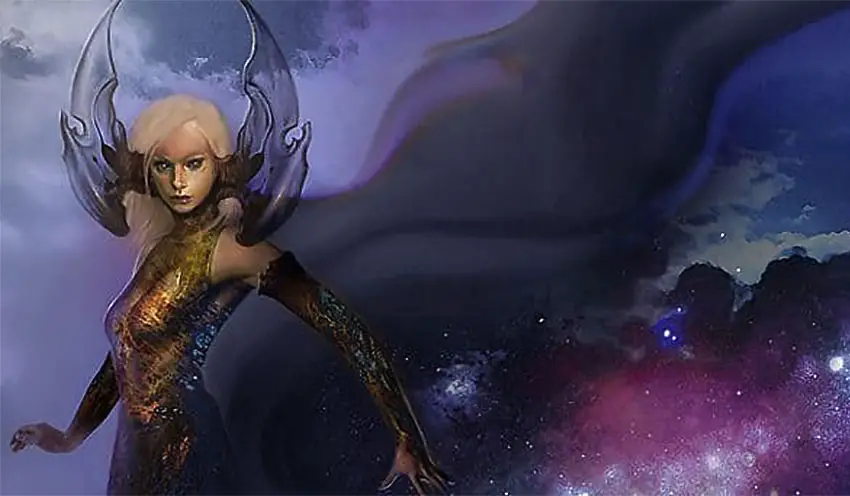
Other cards like Vela, the Night Clad and Galecaster Colossus make Combat much more convenient and remove troublesome threats from opponent’s boards. The deck also runs its fair share of both targeted removal and “board wipes,” allowing it to rebuild from the ashes much faster than any of the 2017 Precon decks. As such, for new players who may be unfamiliar with certain mechanics, this deck allows them to have ample response to the threats their opponents play whilst they create their own.
The main drawback is that the deck can create cluttered board states over time, especially due to Inalla spitting out tokens that trigger a flurry of other effects from other cards in the late game. The cards are also much more wordy in comparison to the other decks, which can overwhelm new players at first glance.
Value
Financially speaking, the only card above $5 is Kindred Dominance, with the remaining cards all being relatively cheap pickups that can be found easily.
As for their intrinsic value, the cards lend themselves to more archetypes then one, but are ultimately outclassed by better cards printed in other sets. Why stand for a second-rate Clone Legion when you can steal the win with a kicked Rite of Replication? Why cast Decree of Pain when Damnation deletes a board much faster and for 4 less Mana?
And nothing, nothing you could ever tell me, will make me think Magus of the Abyss is even a remotely good card.
Accessibility
As cheap as the single cards are, this deck is one of the only few that can be found for sub $100 on Amazon or eBay listings. However, it’s still easier to build the deck from singles as most of the cards have been reprinted in one way or form in supplementary sets like Double Masters or the Zendikar Rising Commander decks.
Overall Rating
Exploring the wondrous world of wizardry in MTG has never once made for a dull deck, and this one never fails to amaze as one of the better toolbox style Precons made in the past half decade.
End Step
So! That wraps up my ratings for the Commander 2017 precon decks! I hope this article didn’t bore you out (hopefully, at least) and gave you guys sufficient insight into my thought process for rating these decks moving on!
If you liked this review, check out the one for 2018 Commander Precon decks too.
Leave any comments you guys might have in the comments section below and I’ll try to address them as much as I can!

